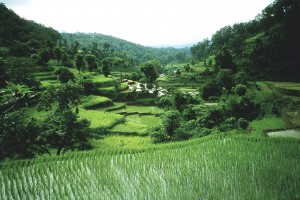IUFRO 125th Anniversary Congress Spotlight #46 – Getting a handle on future needs of forestland owners
Private owners control nearly 70 million hectares of forestland around the globe and account for well over 50% of the forestland in many countries in Europe and North and South America.

What does the future hold for owners of forestland? (Photo Pixabay)
These owners – many of them families, individuals and other small holders – operating within social, financial and political constraints, will largely dictate the future of the forests.
That is the underlying reason for a session at the upcoming IUFRO 125th Anniversary Congress in Freiburg, Germany in September entitled: History, Findings and Future Directions of Forest Landowner Research.
Dr. Brett Butler, of the U.S. Forest Service, is coordinating the session and says: “There are numerous individual researchers and institutions that study these private owners, but the opportunities to directly compare findings and methods across countries are limited. Read more…
Enhancing forest-related development: Community and smallholder forestry in the nexus of markets, policy, and implementation
Forests hold the potential to contribute to sustainable local development in many regions of the world. For this potential to be realized, rural dwellers need to have access to healthy forests, need to be linked to markets, and hold capacities to actively engage in forest product value chains. This requires an enabling legal environment and supportive policies. For the last two decades, considerable efforts and investment have been devoted to improve these enabling conditions in many locations and at different scales. Even so, in many places in the world where a forestry development potential may exist, deforestation and forest degradation, unfavourable legal environments and policies and competition with better endowed or politically well-connected entrepreneurs prevail. Read more…
IUFROLAT III Session Highlights: Utilization of Forest Products
Aprovechamiento de productos forestales / Utilization of Forest Products
Session moderator: Don K Lee, IUFRO Immediate Past President, Korea
Find more information about IUFRO’s Division on Forest Products: www.iufro.org/science/divisions/division-5/
The primary objective of the first paper was to determine if Caesalpinia velutina and Giricidia sepium fuelwood plantations in Nicaragua could be economically viable for smallholders. It was concluded that fuelwood plantation yields according to product-specific requirements were essential for the economic viability analysis. In the context of this study and contrarily to public perception, farm-based Caesalpinia velutina and Giricidia sepium fuelwood plantations could be economically viable over longer rotations.
The second paper addressed the role of Sewage Treatment Plants (STPs). The sewage treatment process generates a solid waste named sewage sludge, a material rich in organic matter and nutrients. According to this study sewage sludge showed a great potential in the production of forest seedlings. It recommends the use of composite substrates with sewage sludge, because it minimizes the need for acquisition of commercial substrates, decreasing production costs by increasing productivity and disposing this waste in a more sustainable way.
The aim of the third paper was to contribute to the understanding of the growth dynamics of native species of Araucaria taking into account its complex structure and by the analysis of growth and competition, to subsidize the forest management and its conservation. The endeavour of trees to compete for light can be used to determine the best management and production options.
The fourth paper studied the growth dynamics of different species in an Araucaria forest remnant stand. It concluded that there is evidence that in the past the stand of Araucaria Angustifolia should have been thinned more intensively. Competition indexes are useful and can be used to recover information in unmanaged stands to optimize resources, and they can also be used as a reference to manage other stands in similar conditions.
The aim of the fifth paper was to determine the percentage of samples that best reflects the actual diameter distribution in a 1,000 ha of primary Amazon forest in Sinop, Mato Grosso State, Brazil. When considering the whole area, 5% sample intensity has proven to be sufficient to estimate the horizontal structure of trees above 30 cm of DBH. Considering the diversity of the Amazon rainforest, it is still not possible to extrapolate this anlysis of the diameter distribution. Further replication studies are required to establish sample intensities and methods for different forest structures.
Presentations in this session:
Using Product-Specific Fuelwood Yields to Assess Economic Visability: A Case Study of Farm-Based Gliricidia sepium and Caesalpinia velutina Plantations in Nicaragua. (Kahlil Baker, UBC, Canada)
Utilization of sewage sludge in the composition of substrates in forest seedlings production. (Alan Marques Abreu, UFRRJ Brazil)
Growth dynamics of different species in an Araucaria Forest remnant. (Aline Canetti, Embrapa Florestas, Brazil)
Competition index: a tool to define thinning in stands of Araucaria angustifolia. (Rafaella Curto, Embrapa Florestas, Brazil)
Determination of sampling intensities to estimate diameter distribution in Amazon Forest. (Mariana De Oliveira Ferraz, Embrapa Florestas, Brazil)

